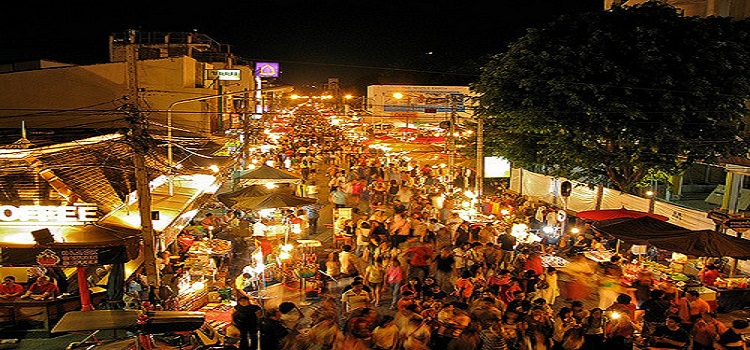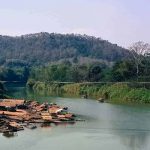Thailand’s second most important city, Chiang Mai (literally, “new city”), was chosen in 1292 by King Mengrai to replace Chiang rai as the capital of his lanna Kingdom. Under Mengrai, Chiang Mai became a major base for theravada Buddhism. it was during this period and the subsequent reign of King tilok that many fine wats were built within the walled city, which is still the most atmospheric area. today, visitors are increasingly drawn to Chiang Mai not only for its beautiful temples, but also for its excellent shopping and trekking facilities and upscale hotels and restaurants.
Old Chiang Mai
The first bridge across the Ping River was built in 1950. Others were later added to cope with the city’s growth.
Wat Muen Ngon Kong
This wat has exquisite lattice-work and a Lanna chedi topped by a Burmese finial.
Wat Phan Waen
A typical Northern Thai temple, Wat Pan Waen is set within peaceful compounds, which provide relief from the city heat. The doors of the wihan are decorated with religious images.
Wat Phra Sing
This wat was built in 1345 to house King Kham Fu’s ashes. The Wihan Lai Kham is a superb Lanna structure with carved and gilded pediments. Murals inside depict everyday life in 19th-century Chiang Mai.
Wat Phan Tao
The well-preserved Lanna wihan is notable at this wat. Its roof, supported by columns, is decorated with Lanna cho fas
Wat Chedi Luang
The spacious, triple-roofed wihan houses panels depicting scenes from the jataka tales.
City of Splendid Wats
Though a fraction of the size of Bangkok, Chiang Mai boasts almost as many wats as the capital. Most were built during the city’s most prosperous period – from the 13th to the mid-16th centuries – when it was a major religious center. Many wats in Chiang Mai survive from this period, but most were altered by the Burmese, who subsequently ruled the city. Nevertheless, Chiang Mai’s architecture is still thought to epitomize Lanna style, with features such as elaborate woodcarvings on temple pillars and doors.




